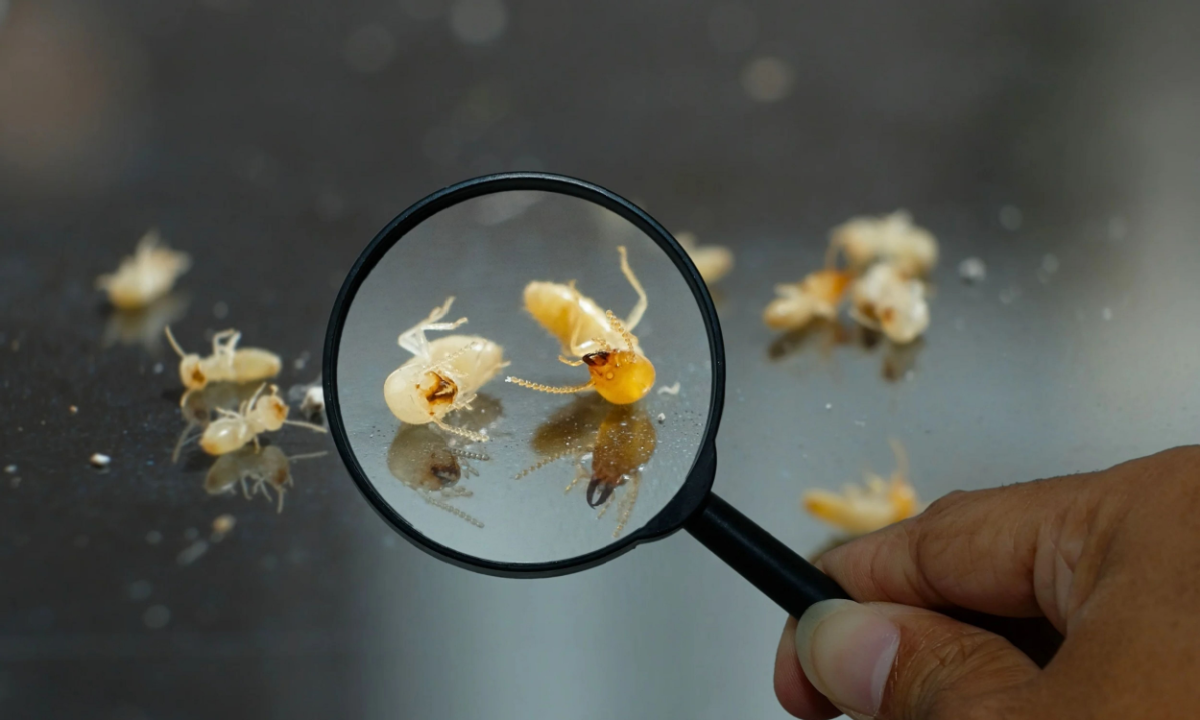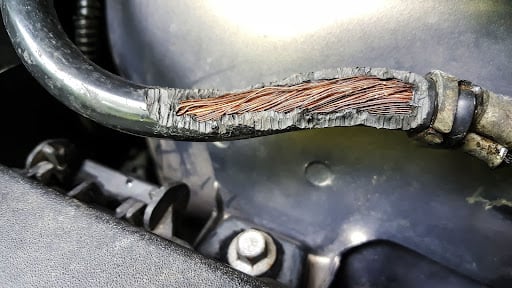Due in part to its incredibly variable topography–including a wide array of old architecture and lush green landscape–New Jersey is home to several species of insects, arachnids, and other wildlife. Sometimes, these critters can find their way into areas where they aren’t readily welcome, such as your home, garage, basement, or shed.
While it’s common to see a bed bug infestation, you may be alarmed to find a spider infestation in your house. While spiders typically indicate the presence of other pests, they can be a pesky pest in and of themselves.
In this article, we’ll dig into Garden State’s most commonly observable spider species, fleshing out their common identifiers, habits, favorite hiding places, and whether or not you should be concerned about their presence in your home.
Request a Free, No-Obligation Quote
Common House Spiders
As the name suggests, these spiders primarily like to inhabit human dwellings, such as houses, apartment buildings, office buildings, and other structures typically inhabited by people.
Visually, common house spiders have a body shape reminiscent of a widow; however, they range from brown to black in color and may have various markings, making them a bit difficult to identify. In addition, females range from 5 to 6 mm, while males average between 3.8 and 4.7 mm.
Like widows, common house spiders rely on neurotoxic venom. Fortunately, the venom is far less dangerous than widow spiders, and their bite is generally harmless to humans.
American Grass Spiders
Second on the list is the American grass spider. You can identify these spiders by their large, horizontal webs found in the grass in your yard. However, these spiders use their web to catch prey; instead, they’re hunting spiders that use their incredible speed to attack prey.
Visually, these spiders are very easy to identify due to their large size (growing up to 20mm in length), brown body color, dark-brown-banded legs, stripes down their cephalothorax, and three rows of eyes.
Overall, American grass spiders are not toxic to humans. Like most spiders, their venom isn’t strong enough to cause serious health risks, though minor irritation, pain, and redness may be present around the bite.
Cross Orb Weavers
The cross orb weaver–also known as the pumpkin or European garden spider–is a member of the orb weaver family commonly found in New Jersey. While you won’t likely find this spider in your home, the cross orb weaver can commonly be found in gardens and foliage across the state, poised in the middle of its large, ornate, orb-shaped web.
The cross orb weaver is identifiable by its bulbous abdomen and large overall size, growing up to 20mm in length. Colors can vary from light yellow to gray, and white markings are almost always present on the dorsal side of the abdomen.
These spiders tend to be rather shy, only biting when feeling trapped or threatened. On the off chance you receive a bite, symptoms are generally limited to localized redness and irritation.
Hacklemesh Weavers
Hacklemesh weavers are frequently found in damp and secluded areas such as wood piles, under leaf litter or bark, or in basements during the colder months. Webs tend to be rather irregular and feature an off-center, conical retreat.
These spiders are commonly identifiable by their dark reddish-brown color that lightens as it moves away from the eyes. In addition, an ornate pattern is often observed atop the gray abdomen, which may appear pinkish in hue. Hacklemesh weavers tend to be in the medium to large size range, with females averaging anywhere from 5 to 14 mm in length. Males are a little bit smaller on average, as with most spider species.
Though few reports of Hacklemesh bites exist, it’s safe to assume that their venom is not overwhelmingly harmful to humans, causing nothing more than mild pain, irritation, and redness at the bite.
Triangulate House Spiders
This small, shy species spends most of its time rebuilding its irregular web after hunting other invertebrates, such as ants, pill bugs, flies, and other spiders.
The triangulate house pest is easily identifiable by its small 4 to 6-mm size and large, bulbous abdomen. Color-wise, these spiders tend to be a brown color with a lighter abdomen, often laced with purple-brown triangular striations.
While other members of their genus can cause painful bites, the triangulate house spider isn’t overwhelmingly aggressive or toxic, with bites tending to cause no more than localized irritation.
Request a Free, No-Obligation Quote
Wall Spiders
The name “wall spider” is more-or-less a nickname for arachnids in the genus Oecibus, a group of small spiders that primarily live on rough-textured walls. These small spiders spin tiny, ornate webs over dips and crevices of walls, used to capture small insects.
Wall spiders feature tan or gray bodies with stripe-like markings across the tops of their abdomens. When paired with their slight stature, it’s easy to miss them on lighter-colored walls and buildings.
Luckily, these spiders are completely harmless to pets and children. Irritation is generally minimal due in part to their small size and minimally toxic venom.
Yellow Garden Spiders
Like the cross orb weaver, yellow garden spiders are a common species to find outdoors in the New Jersey area. These spiders build large webs between pieces of tall grass, bushes, or trees in primarily sunny areas that are well-protected from the wind.
Due to their dramatic coloring, including yellow and black bodies, white cephalothorax, banded legs, and spotted abdomens, these spiders are easily recognizable. They tend to dangle in the middle of their webs and quickly drop to the ground if threatened, allowing them to escape undetected.
Yellow garden spiders aren’t necessarily harmful, though they’re known to bite when feeling threatened. Besides a sharp sting and some localized irritation, yellow garden bites are relatively mild and will subside independently in a few days.
Wolf Spiders
These common New Jersey pests are known for their fear-inducing appearance and large size, growing up to 2 inches in length! At this size, they feature noticeable hairs atop their primarily brown bodies and 8 large eyes, providing them with excellent eyesight.
Wolf Spiders are ground-hunting spiders who actively hunt their prey rather than capture them in a web. Wolf spiders are excellent hunters known to devour a variety of pest insects. For this reason, they’re often viewed as a necessary predator rather than a pest themselves–although we offer wolf spider removal services.
Though frightening in appearance, wolf spiders are not traditionally aggressive or dangerous toward humans. While their large fangs can cause a significant stinging sensation when initially bit, the pain tends to subside in minutes, and side effects are limited to minor skin irritation.
Parson Spiders
Generally referred to as the eastern parson spider, this arachnid is a medium-sized hunting spider named for its markings resembling the cravats worn by 8th-century clergy members. Like wolf spiders, parson spiders don’t spin webs; instead, they tend to ambush insects and other prey on the ground or walls.
These spiders are black with gray abdomens and distinct white markings on their backs.
While not aggressive, these spiders have been known to bite when threatened. Bites can be painful and have been known to cause allergic reactions, making them a slightly more-dangerous addition to the list.
Brown Recluse Spiders
Around the country, the brown recluse is notorious for its aggressive reputation and highly venomous bite. However, it’s important to note that this reputation is not factually backed. Recluse spiders are not known to be aggressive towards humans, instead preferring to run and hide rather than bite.
Visually, these spiders vary in color between light tan and medium brown, though they all possess a singular dark marking on the cephalothorax, reminiscent of a violin.
While their venom is medically important, bites are rarely as bad as their reputation suggests. Only 10% of bites develop into necrotic wounds, and most bites heal on their own within a week.
Bold Jumping Spiders
These interesting little arachnids are a species of roaming spiders, possessing powerful legs and a compact body that allow them to jump over four times their body length. Unlike most spiders that use their web as a tool to trap insects, the bold-jumping one strictly uses its web as a sheltered escape.
Primarily black in color with a variety of white or red markings, these spiders are difficult to miss. Their large primary eyes and iridescent chelicerae only add to their unique appearance.
While bites are rare, they do occur from time to time. Luckily, these little spiders don’t possess venom that’s medically important to humans or pets, making their bites no more painful than a bee sting.
Black Widow Spiders
Arguably rivaling the brown recluse with its poor reputation, the black widow is a moderately venomous and aggressive spider found throughout the United States. This web-building spider relies on its sporadically-built web to capture prey, which it quickly immobilizes with its toxic venom. These spiders are commonly found in dark, secluded areas like wood piles and cluttered garages or sheds.
Visually, these spiders are easy to make out due to their shiny black color, classic widow shape, and distinct red hourglass on the underside of their abdomens.
Widows are the second on this list with medically important venom, containing a strong neurotoxin that causes severe pain and discomfort. While rarely fatal, medical attention is seriously recommended if bitten to prevent the risk of severe illness.
Signs of a Spider Infestation
Spiders are rarely a welcome addition to the home; luckily, it’s generally pretty easy to spot their presence using a few basic guidelines.
- Physical Sightings: While this may seem obvious, one of the easiest ways to tell that you have a spider infestation is to actively see them in or around your home.
- Presence of Webs: Several tend to leave a trail of their presence in the form of webs, often residing in tall corners of ceilings, in window sills, or behind furniture.
- Egg Sacks: Nothing’s eerier than spotting a couple of fresh spider egg sacs, each containing hundreds of unhatched baby spiders.
- Bites: While most won’t bite unless threatened, there’s a good chance you’ve been bitten a time or two while you were sleeping.
- Excess Flying Insects: Spiders are primarily attracted to locations with a bountiful food source. With most spiders consuming other insects exclusively, the presence of flying or crawlings pests often signals the presence of spiders.
Spider Infestation Solutions
If you’re looking to evict your unwanted, 8-legged tenants, we have a couple of preventative maintenance tips for you to follow.
- Keep Your Home Clean: Spiders are attracted to other pests, which in turn are attracted to food sources like garbage, old food, and rotting fruits/vegetables. By clearing your home of potential pest food sources, the pests will likely search elsewhere and will soon follow suit!
- Seal Exterior Cracks and Gaps: No pest simply appears; it has to gain entry to your home first. If you’re suffering from an apparent infestation, try sealing cracks in siding, gaps in windows and doors, and any exterior holes that may be allowing them to sneak in.
- Chemical Treatments: If all else fails, chemical repellents and treatments can help rid your home of stubborn infestations. However, it’s important to follow instructions to a tee so as not to cause injury, illness, or irritation.
- Hire an Exterminator: If all else fails, hiring a professional specializing in spider control in New Jersey can help you eliminate pesky spiders and other pests lying around your home.
While spiders are common in New Jersey, they aren’t likely to pose serious health risks to you, your family, or your pets. Even so, they tend to be among the most fear-inducing nuisance pests. If you’re having issues eradicating a potential infestation or simply don’t wish to take matters into your own hands, don’t hesitate to reach out to your qualified local pest experts at Anchor Pest Control below.




